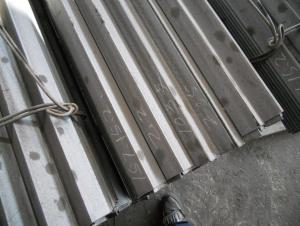Reinforcing bars, or rebars, are the unsung heroes of the construction world. They’re the backbone of concrete structures, providing strength and stability where it’s needed most. But what exactly are these metal marvels, and why are they so essential to the work we do? Let’s dive in and explore the world of rebars, from their humble beginnings to their modern-day applications.
A Brief History of Reinforcing Bars
Before we get into the nitty-gritty, let’s take a quick trip down memory lane. The concept of reinforcing concrete with metal has been around for centuries, but it wasn’t until the late 19th century that rebars as we know them today started to take shape. The first patent for reinforcing bars was granted in 1878, and since then, they’ve become an integral part of the construction industry.
The Science Behind Rebars
Rebars are made from steel, which is chosen for its high tensile strength and ductility. When concrete is poured, it’s strong in compression but weak in tension. That’s where rebars come in. They’re embedded into the concrete to create a composite material that can handle both compression and tension forces. It’s a match made in engineering heaven!
Types of Rebars
Not all rebars are created equal. There are various types of rebars, each with their own unique properties and applications. Here are a few of the most common types:
– Straight Rebars: These are your basic, everyday rebars. They’re used in a variety of applications, from residential construction to large-scale commercial projects.
– Deformed Rebars: These have a pattern of ridges or deformations along their length, which helps to bond the rebar to the concrete. They’re often used in areas where high strength is required.
– Eco-friendly Rebars: As the world becomes more environmentally conscious, so does the construction industry. Eco-friendly rebars are made from recycled materials and are gaining popularity for their sustainability.
How Rebars are Made
The process of making rebars is a fascinating one. It starts with melting down steel in a furnace, then casting it into billets. These billets are then rolled into the desired shape and size, and finally, they’re cooled and treated to enhance their properties. It’s a process that requires precision and expertise, ensuring that the rebars are up to the task of supporting our structures.
Installing Rebars
Installing rebars is an art in itself. It requires careful planning and execution to ensure that they’re placed correctly and securely. Workers use a variety of tools and techniques to position the rebars, from tying them with wire to using specialized equipment. Once in place, the rebars are held in position until the concrete sets and cures, creating a strong bond between the two materials.
The Role of Rebars in Modern Construction
In today’s world, rebars are more important than ever. They’re used in everything from skyscrapers to bridges, from tunnels to dams. Without rebars, our infrastructure would be weaker, less durable, and more prone to failure. They’re the silent guardians of our built environment, working tirelessly to keep us safe and secure.
The Future of Rebars
As technology advances, so too does the world of rebars. We’re seeing the development of new materials and techniques for creating stronger, more durable rebars. There’s also a growing focus on sustainability, with researchers exploring ways to make rebar production more environmentally friendly. The future is bright for these metal marvels, and we can’t wait to see where they’ll take us next.
In Conclusion
Reinforcing bars are the unsung heroes of the construction world, and it’s about time we give them the recognition they deserve. They’re the backbone of our structures, the silent strength that keeps us safe. So next time you walk past a construction site, take a moment to appreciate the rebars that are hard at work, shaping the world around us. They may not be glamorous, but they’re essential, and we’re grateful for their presence in our lives.

